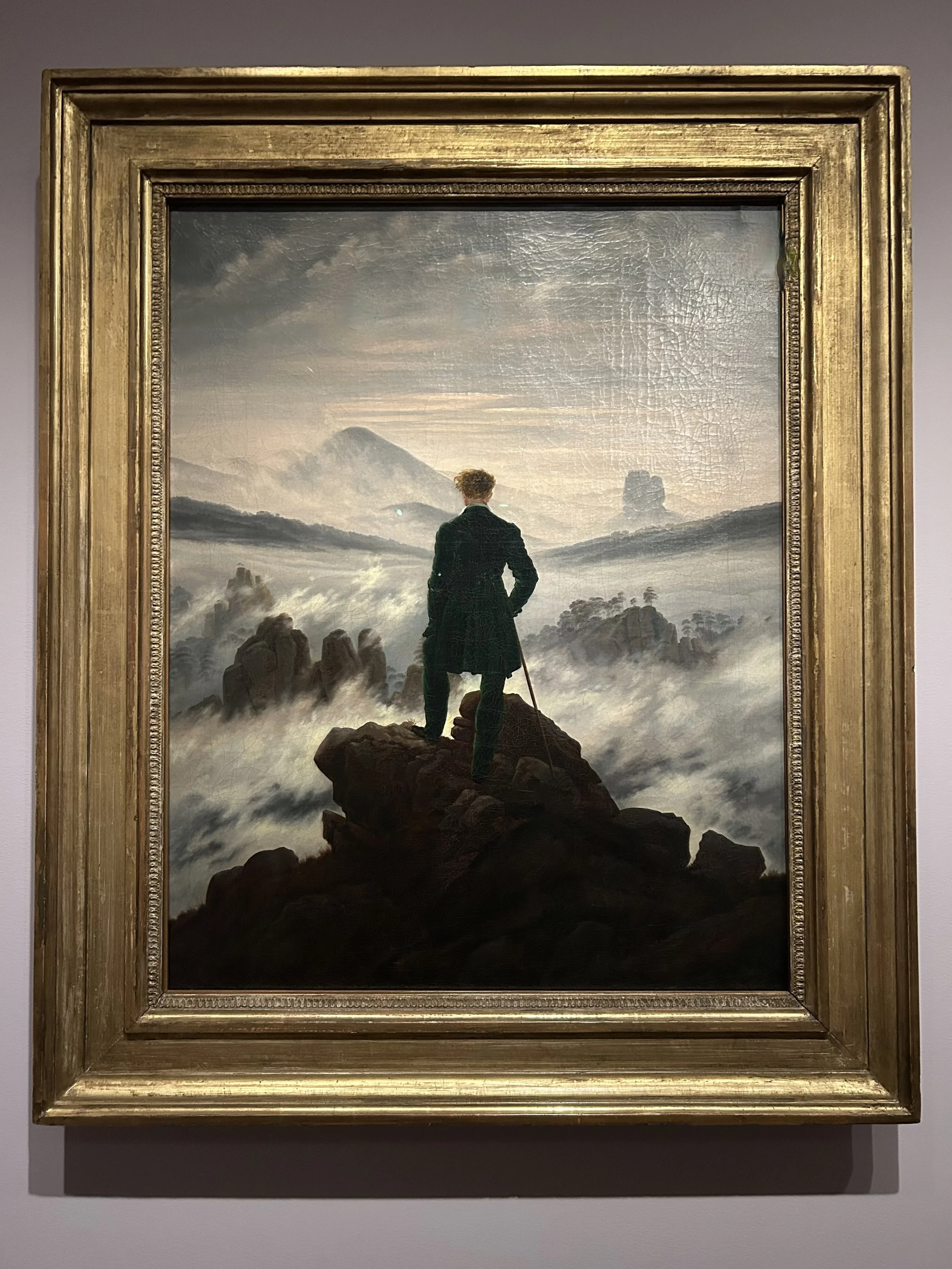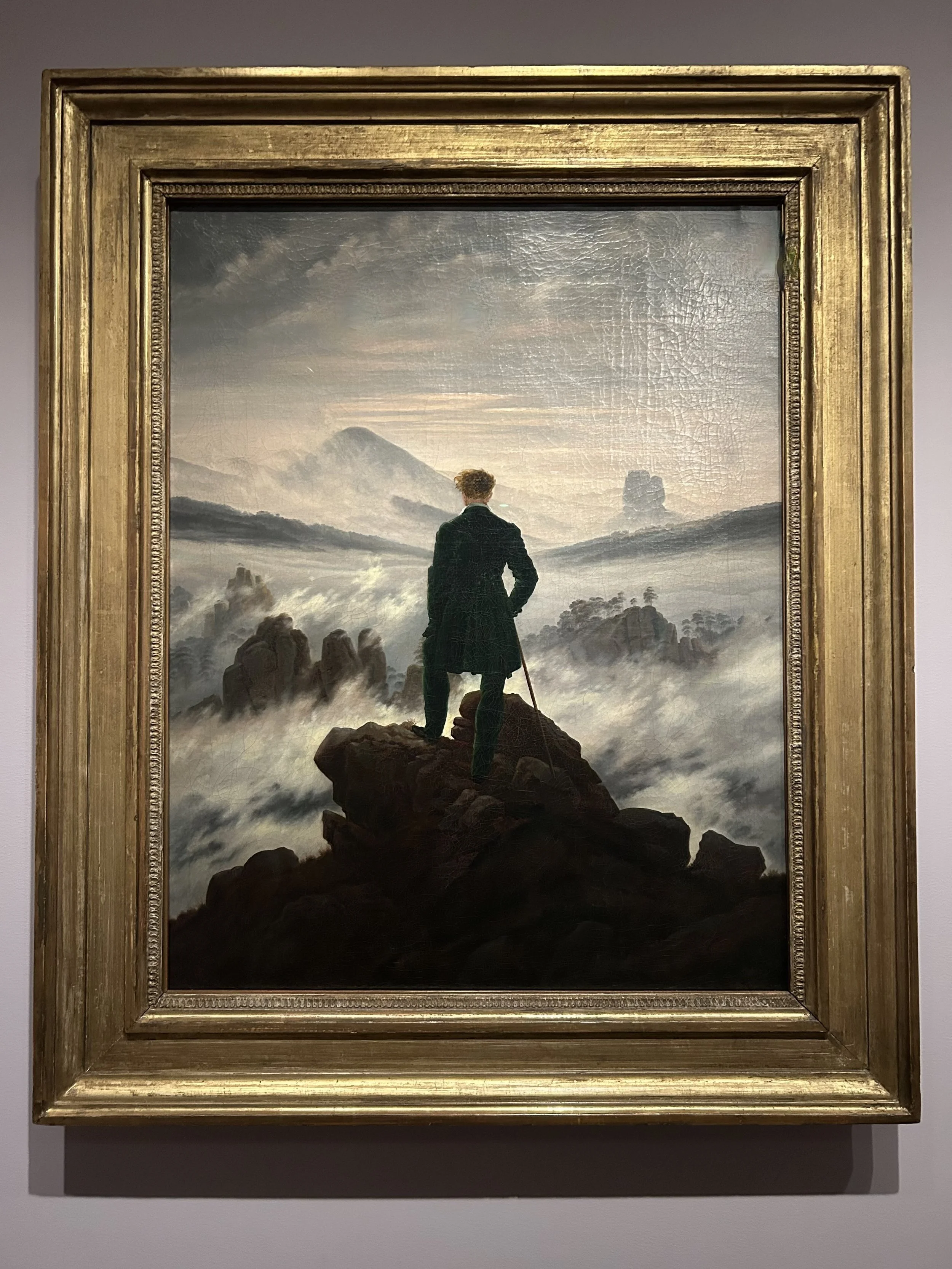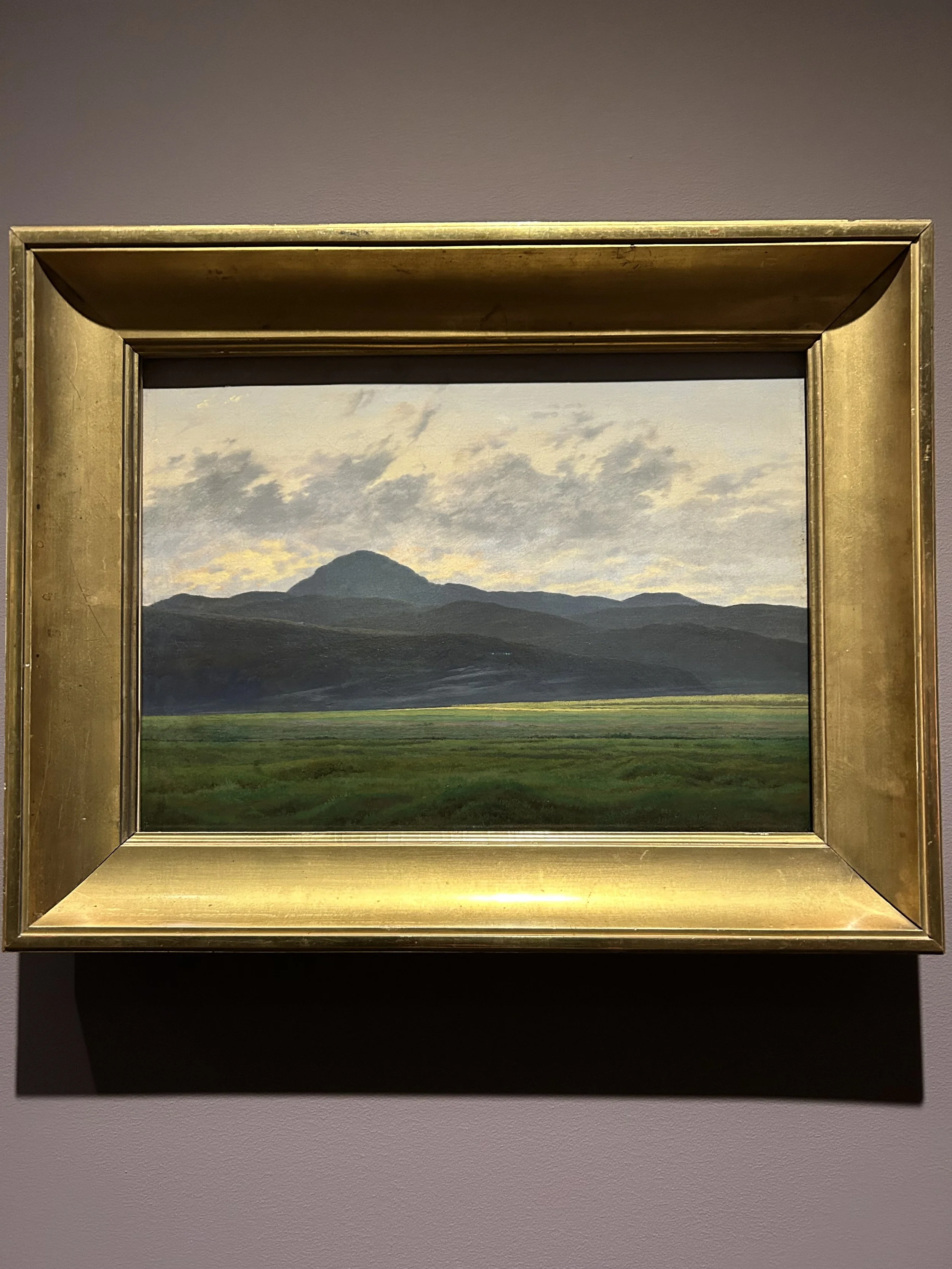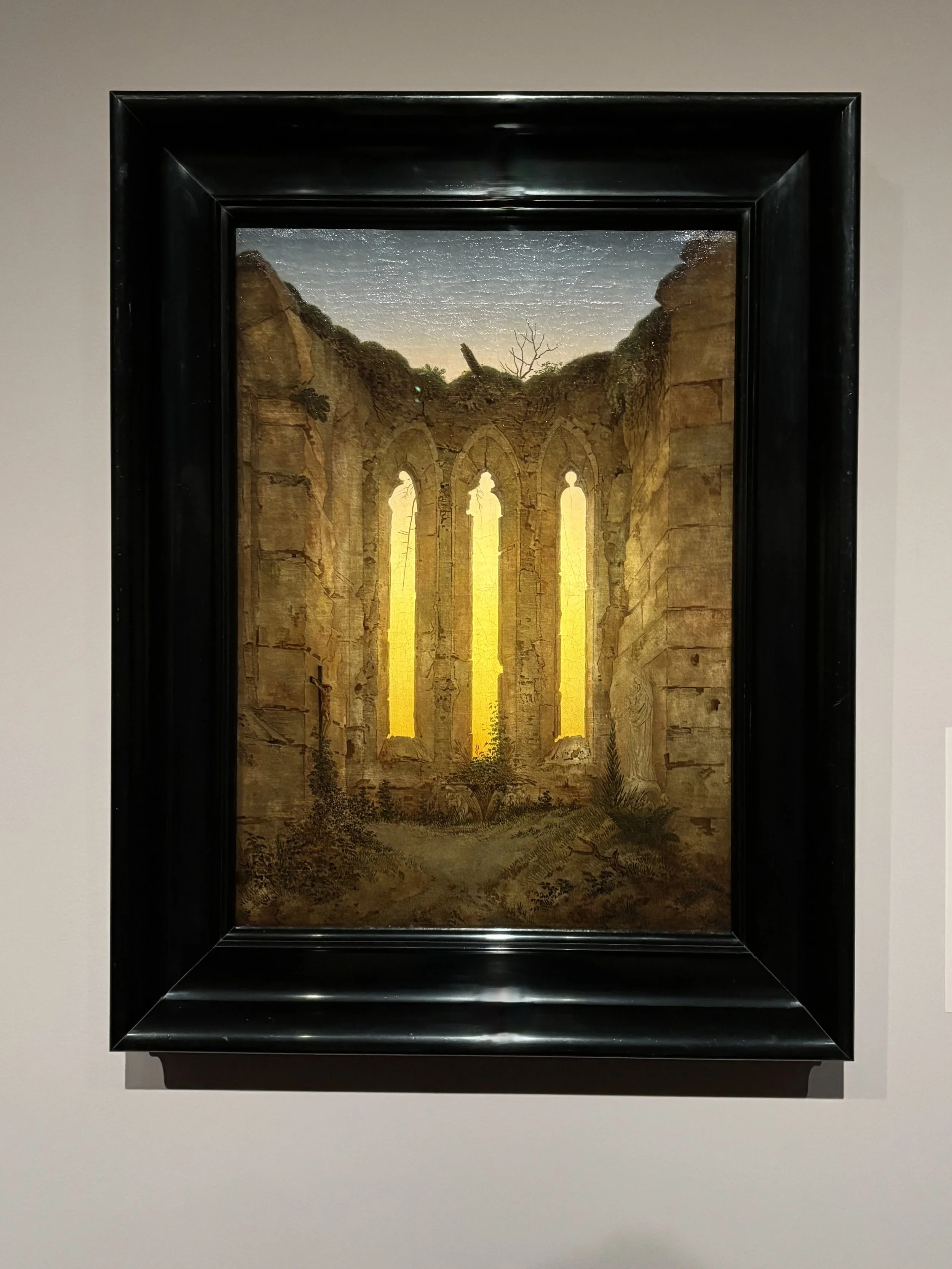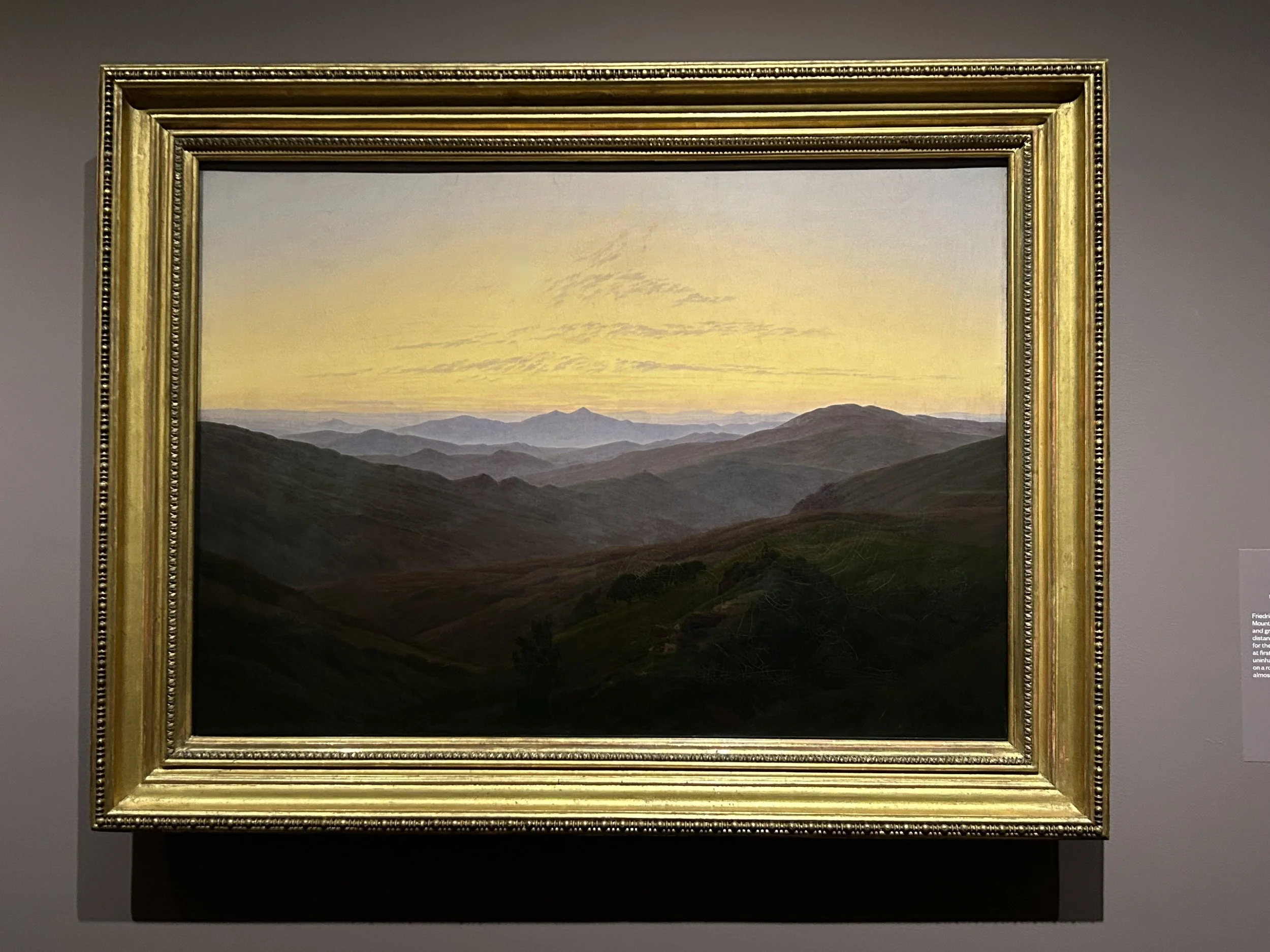So excited to announce that something new is coming next week! If you haven’t subscribed to the blog yet, now is a great time to do that, so you don’t miss a thing. Click on the button at the bottom of this post and you’ll also get a free Fall Beauty list full of ideas. Enjoy!
Flipping through the mail, I saw a brochure about upcoming exhibitions at the Metropolitan Museum in New York. Even though I don’t live anywhere near New York, I regularly get mailers from the museum.
Several years ago, I joined the Met in anticipation of my daughter’s moving there for college. I’d be visiting her often, I reasoned, and would have opportunities to go to the museum during those trips.
And we did. Since that time, she graduated, worked in NY for a year, and moved back to our state. I still get mail from the Met, though, and after a cursory glance, I usually toss it.
But this time, as I opened the envelope, a striking painting called Wanderer Above the Sea of Fog caught my eye. Curious, I read the description about the exhibition, entitled Caspar David Friedrich: The Soul of Nature. It encouraged recipients to come and “explore the profound connection between humanity and nature.” Given my love for beauty in nature, it sounded like something I’d like to see.
But I won’t be going up to NY anytime soon, I thought. I should just trash this. Still, something compelled me to stuff it in my planner. If nothing else, I could look up the artist online and see more of his works.
Fast forward a few months later and my husband and I found ourselves planning a trip to NY. I flipped through my calendar, found the mailer, and saw that the exhibition would still be showing at the Met when we were there. I’d never heard of Caspar David Friedrich but looked forward to seeing more of his art and learning more about him. We made time in our schedule to go to the museum and see it (and many other paintings besides).
As part of the German Romantic movement, Caspar David Friedrich (September 5, 1774 - May 7, 1840) “sought to depict nature as a ‘divine creation, to be set against the artifice of human civilization’,” according to the website that bears his name.
Friedrich “reimagined European landscape painting by portraying nature as a setting for profound spiritual and emotional encounters,” writes Max Hollein, the CEO of the Metropolitan Museum of Art. “The vision of the landscape that unfolds in his art [about the sublime]—meditative, mysterious, and full of wonder—is still vital today.”
The first painting we looked for that hinted at the sublime was the one that captured my imagination all those months earlier—Wanderer Above the Sea of Fog (which is shown at the top of this article). The man in the foreground of the painting is standing atop a rocky outcropping with his back to us, looking out over tall mountains in the distance, other rocky formations, and fog partially covering the rocks and valleys below. The man has a long walking stick in his hand and wears a dark green, almost black, long, tailored coat with dark pants and boots. The coat along with the white shirt collar peeking above his collar give him a dressy appearance (although perhaps that was just the current fashion). But his dark blond, light brown hair looks messy, either from the the wind blowing through it or the hike he took to get up here.
All in all, his stance on the rock looks confident but the view he’s gazing at is somewhat frightening. He seems to be very high up. The fog below him is moving like water, barely concealing the nearby mountains and rocks and covering the valleys below. The grays, blues, and browns add a moodiness to the painting while the white throughout lightens it up.
What is he thinking? I wonder. It feels as though he has invited me to join him, to see what he sees, to experience this extraordinary view with him. I think I would be overcome with awe but also very conscious of my smallness in the face of the power of nature. Perhaps a bit afraid too, if the height is as soaring as it seems. But even with that, I’d probably still be thanking God for such a display of beauty and majesty as this.
When I first saw this painting, Mountain Landscape in Bohemia, I thought of Scotland, honestly, because we have spent so much time there. But I also thought about the simplicity of the composition in terms of color—there are three swathes of color with many variations within each one, plus a small yellow strip meant to suggest a cornfield. This type of landscape calls to me as none other and reminds me of a favorite psalm (Psalm 121). The sparseness of the painting led a scholar of Friedrich’s time to wonder if it could actually be considered a landscape. But that’s what I love about it, and it’s one of my favorite paintings from that day.
This painting, called Ruins of Oybin, depicts a scene in a monastery ruin. What draws me is that the three tall, narrow statues, including Mary and Jesus, are glowing—yellow at the top brightening to golden at the bottom. They look almost like candles burning in praise and supplication to God. The trio of golden statues also reminds me of a triptych above the altar. Though the monastery is in ruins, the glowing light amidst shadow and stone suggests enduring faith in the living Christ Jesus.
Another painting I admired was The Riesengebirge. Here, the landscape in the foreground goes from dark greens and browns to grayish blues. The heights of the mountains seem to point to the sky above, which is glowing gold and edged with lilac and gray at the top. In the photo, it’s difficult to see but a man is resting on a rock to the right of the trees below—“a tiny figure almost lost within the boundless landscape.” Another hint of a meditative approach to the mystery and wonder of nature.
Other paintings of Friedrich’s include crosses and crucifixes set in nature, such as in the forest, in the mountains, and by the Baltic Sea. One writer notes that the forest setting reflects “period notions of nature as God’s cathedral.” Friedrich wrote to fellow artist Louise Seidler these words: "‘To those who seek [the cross], [it is] a consolation; to those who don’t, it’s just a cross.’"
Through Christ’s death on the cross—something truly horrible—and his resurrection—something beautiful beyond words—he has given me new life. Now I am his child and his follower. And the beauty I see and write about on Glimsen is a reflection of his beauty, generosity, and love.
Friedrich’s art encourages us to slow down and consider the sublime in nature. To marvel at its wonders and meditate on its mysteries.
And here at Glimsen, I hope you’re encouraged to do that too.
Two questions today: What do you think of the concept of nature as God’s cathedral? Have you ever seen a piece of art that inspired you or somehow encouraged you to enjoy nature?
Are you receiving my blog posts by email? Here at Glimsen, I share glimpses of the beauty around us in nature, the arts, and the unexpected. If you would like to see more, click the button below to receive my posts and updates by email, and you'll also get a free printable gift of beauty in your inbox. I look forward to connecting with you!

